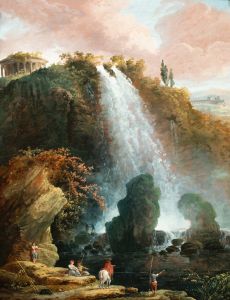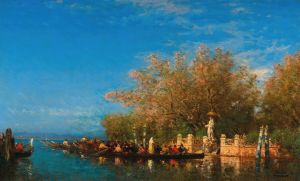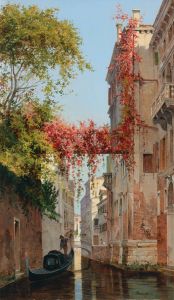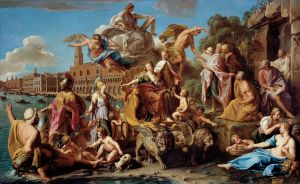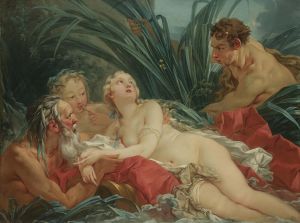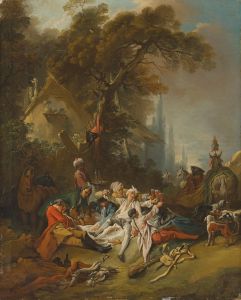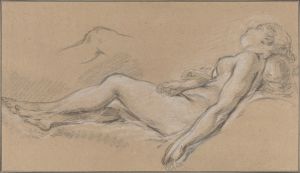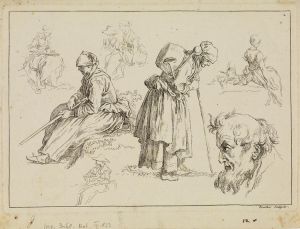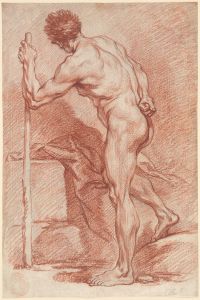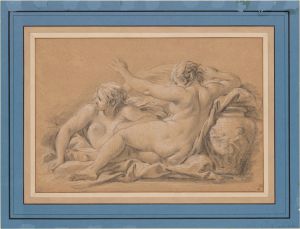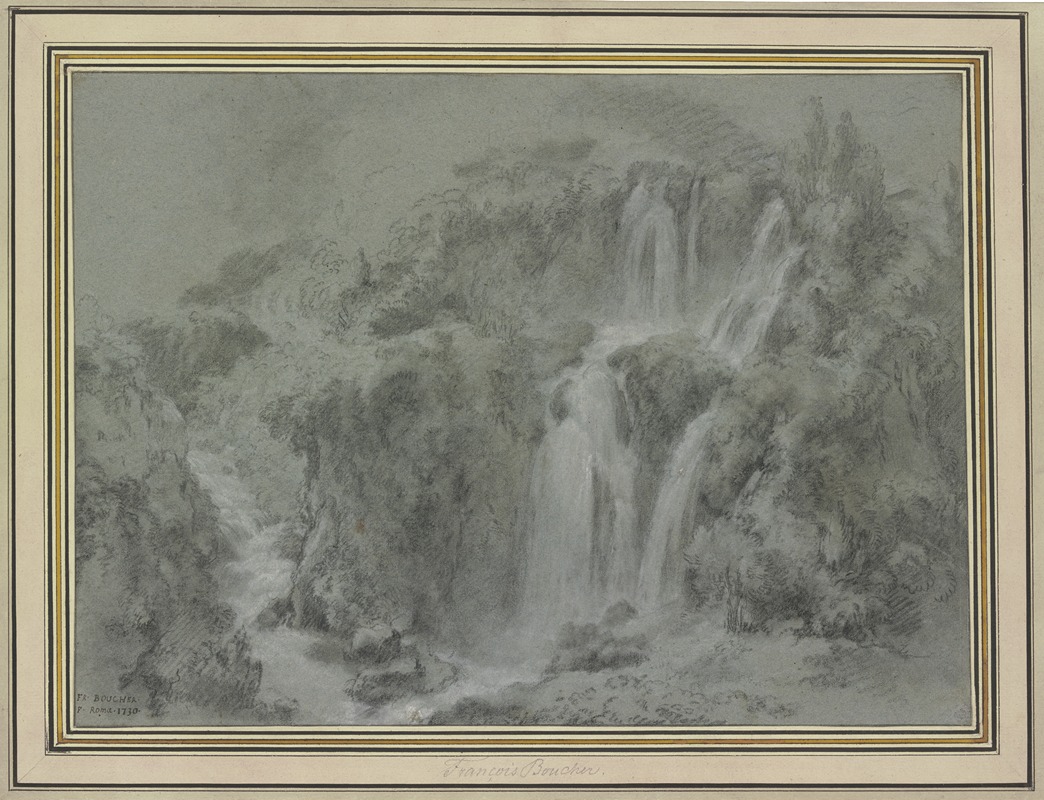
The Waterfalls of Tivoli
A hand-painted replica of François Boucher’s masterpiece The Waterfalls of Tivoli, meticulously crafted by professional artists to capture the true essence of the original. Each piece is created with museum-quality canvas and rare mineral pigments, carefully painted by experienced artists with delicate brushstrokes and rich, layered colors to perfectly recreate the texture of the original artwork. Unlike machine-printed reproductions, this hand-painted version brings the painting to life, infused with the artist’s emotions and skill in every stroke. Whether for personal collection or home decoration, it instantly elevates the artistic atmosphere of any space.
François Boucher, a prominent French painter of the Rococo period, is renowned for his idyllic and voluptuous paintings, which often depict classical themes, pastoral scenes, and mythological subjects. Among his diverse body of work is the painting titled "The Waterfalls of Tivoli." This artwork exemplifies Boucher's skill in landscape painting, a genre he occasionally explored alongside his more famous mythological and genre scenes.
"The Waterfalls of Tivoli" captures the scenic beauty of the waterfalls located in Tivoli, a town near Rome, Italy. Tivoli has long been celebrated for its picturesque landscapes and ancient Roman ruins, making it a popular subject for artists and travelers, particularly during the Grand Tour era. The waterfalls themselves are part of the Aniene River, which cascades dramatically through the town, creating a series of stunning natural vistas that have inspired countless artists over the centuries.
In Boucher's depiction, the waterfalls are rendered with a sense of movement and vitality, characteristic of the Rococo style's emphasis on dynamic compositions and fluid forms. The painting likely reflects Boucher's interest in capturing the interplay of light and water, as well as his ability to convey the lushness of the surrounding landscape. The use of soft, pastel colors and delicate brushwork further enhances the painting's dreamlike quality, inviting viewers to immerse themselves in the tranquil yet lively scene.
While Boucher is primarily known for his portraits and mythological scenes, "The Waterfalls of Tivoli" demonstrates his versatility and keen observation of nature. It is important to note that Boucher, like many artists of his time, may not have visited all the locations he painted. Instead, he often relied on engravings, sketches, and descriptions by other artists and travelers to inform his work. This practice was common among artists who sought to capture the essence of distant locales without the necessity of firsthand experience.
The painting reflects the broader 18th-century European fascination with Italy's natural and architectural wonders. Tivoli, with its combination of natural beauty and historical significance, was a particularly favored subject. Artists and patrons alike were drawn to its evocative landscapes, which offered a glimpse into both the grandeur of nature and the remnants of ancient civilization.
François Boucher's "The Waterfalls of Tivoli" is a testament to his ability to transcend his usual subject matter and engage with the natural world. Through this work, Boucher contributes to the rich tradition of landscape painting, capturing the timeless allure of Tivoli's waterfalls with his characteristic elegance and finesse. The painting remains a valuable piece of art history, illustrating the enduring appeal of Italy's landscapes and the skill of one of France's most celebrated Rococo painters.





